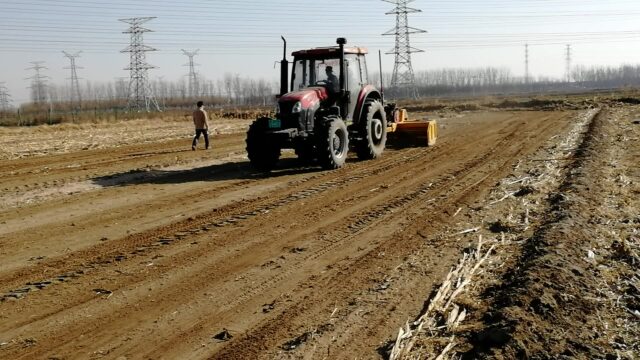
Land levelling is done on farming land before planting. Its benefits are numerous since it involves the use of machinery compared to the traditional method which involved the use of animals’ energy. The type of levellers used traditionally shifted soil from high to low lying areas. These practices lead to uneven distribution of water during irrigation. Water clogging leads to flood basins in the low-lying positions and shortage of soil in the higher positions. Unlevelled soil has an effect in inhibiting plant germination and yield of crops. Uneven land has inhomogeneous soil moisture and water distribution.
Land levelling technology using a laser land leveller has helped to improve agricultural practices and soil agronomic activities. . The practice of land levelling increases the harvest returns due to high yields, is a method of water conservation, and reduces the amount of greenhouse gas emissions. Laser land levellers reduce greenhouse gas emissions by reducing cultivation time, saving energy, and increasing input efficiency. The amount of water and time needed to irrigate levelled land is less compared to unlevelled land. There is also minimal leaching of nutrients from high level land to low level land. Laser land levelling ensures sustainable agriculture in combination with other energy saving technologies like solar based irrigation.
A laser land leveller machine is effective and simplifies the work giving the best results. The tabletop is flattened evenly hence ensuring efficient water supply to every part of the land during irrigation. Land levelling reduces water clogging and distributes soil moisture and water evenly on the farm. Laser-guided land levellers are automatic equipment that helps to achieve a suitable slope thought-out the farm. The parts of a laser land leveller are.
1. Bucket
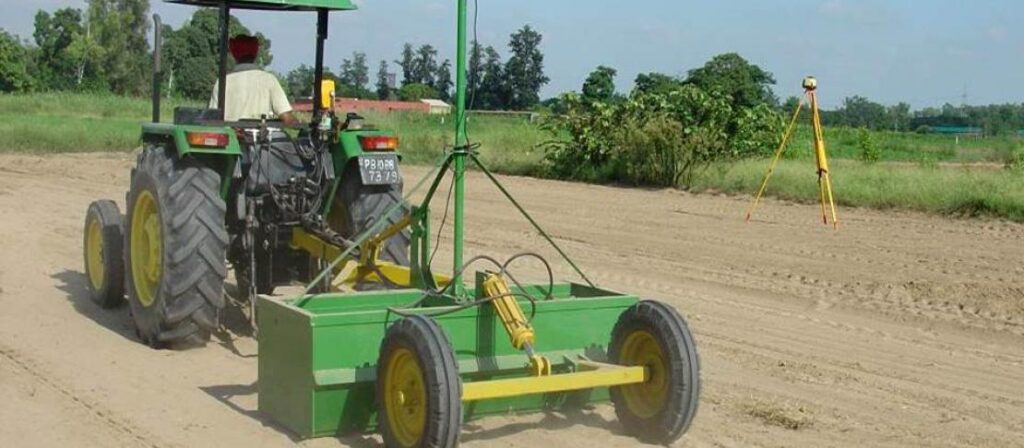
The drag bucket or scrapper is either mounted to the tractor or pulled by the tractor. It is made of alloys of steel hence durable. The most preferred type is those connected to the laser land leveller enables the connection of the tractors hydraulic system and the buckets external hydraulic system.
2. Laser Transmitter
The laser transmitter emits and sends laser beams to the receiving unit. This component allows the laser beam to sweep above the surface of the field during levelling. It has a tripod mount to which it is connected to the system.
3. Laser Receiver
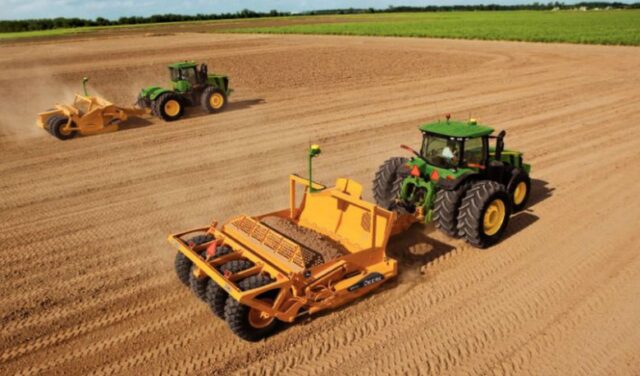
This part of the land leveller transmits signals to the control box. It is mounted on the scraper and is capable of detecting the position of laser reference plane before transmitting to the control box. It can detect a reference plane and is multi-directional.
4. Control Box
The control box is mounted on the tractor to enable easy access by the laser land leveller operator. This part received signals from the receiver and processes them hence showing the position of the bucket. The control box is manually connected when adjusting on the blade. When in automatic position, it has electrical output that supplies energy for driving the hydraulic valve and function without an operator. It is also made up of control switches and indicator lamps. The control box is a signal displayer that shows the position of the laser bucket by processing signals sent from the receiver.
5. Hydraulic system
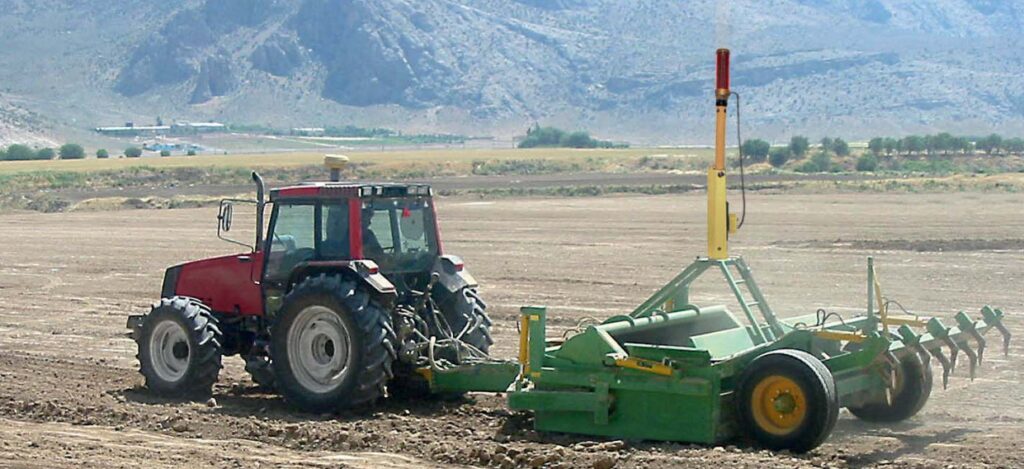
This part allows raising and lowering of the levelling bucket and also supplies oil that is used to power the bucket movements.
The laser’s working mechanism depends on the interaction of all the parts to achieve the desired slope on the land. First, the transmitter emits an infrared beam which is transmitted to the receiver in a straight line and can go up to 700m. The receiver then detects the infrared beam of light and converts it to an electrical signal. The signal is then transferred to the control box. Since the control box is connected to the hydraulic system, it activates its valve.
The hydraulic valve is responsible for ensuring a continuous flow of the infrared light by simultaneously lowering and raising the blade. The land leveller from maralaser.com is a dual-slope laser that controls the blade to effectively flatten the surface evenly removing any components that are likely to hold water. The laser beam is always rotating at 360 degrees. The automatic detection and guidance of the machine enable proper grade maintenance. The system works without the operator touching anything and has the capability of being levelled or sloped in two directions on its own.
6. Laser eye
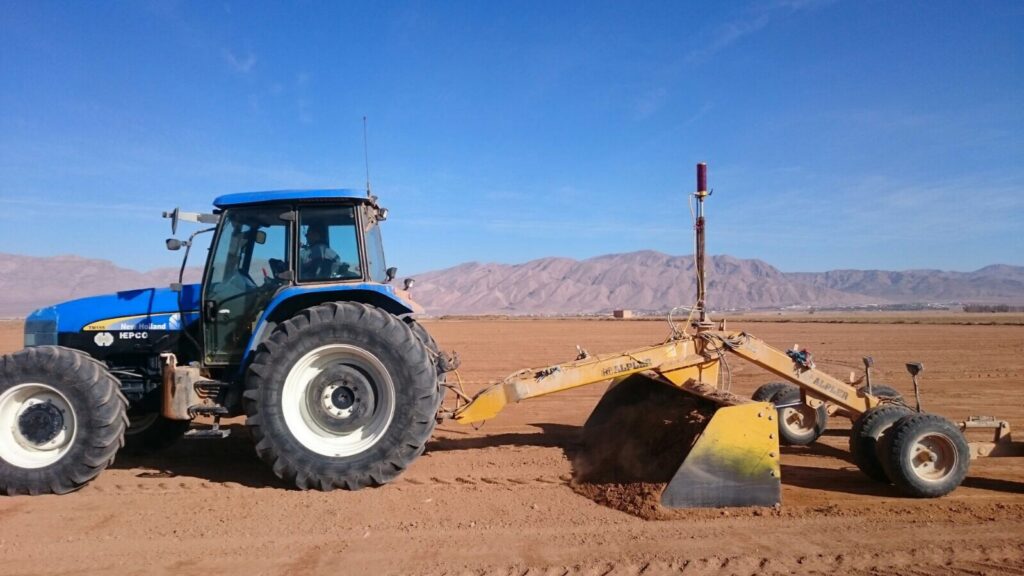
This part of the laser land leveller tells or obtains the level of the land. It beeps to indicate the level of the specific point in the field in relation to the emitter. It is connected to a survey rod that gives a reading on the grade rod.
Benefits of using a laser land leveller include.
- Helps in water conservation during irrigation by more than 35% and reduces the amount of time required for irrigating the land.
- It minimizes the fertilizers, chemicals, and fuel requirements including the seed rate.
- Helps in accomplishing a flat levelled and smoothened soil surface.
- Ensures uniform soil moisture environment for crops throughout the farm.
- Reduces the number of weeds in a field.
- Help in topsoil management.
- Ensures perfect crop germination, growth, and maturity.
- Labour costs and electricity costs are minimized since the machine requires just one operator and is automatic.
- This method increases the productivity and yield of crops hence higher returns and income.
Conclusion
There is a rise in the need for the application of resources conservative agricultural farming methods. Laser land levelling provides for a more efficient way that minimizes resource input and maximizing productivity while preserving the ecosystem. This technology is very beneficial compared to the traditional conventional methods of land preparation and its application is still undergoing research and innovations to achieve desired optimal food production and agricultural yields. The application of this method will help accomplish food security, market demands throughout the globe, environmental safety and preservation, and reduced resource input to achieve higher production levels.













